All structures given below are of vitamin C. Most stable of them is :
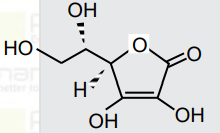
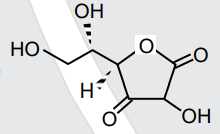
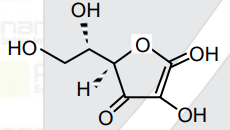
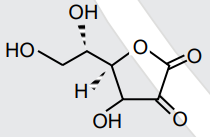
The correct Answer is:A
To determine which structure of vitamin C is the most stable, we will analyze the hydrogen bonding capabilities of each structure. Here’s a step-by-step breakdown of the solution:
Step 1: Identify the Structures
First, we need to look at the four given structures of vitamin C. Each structure will have different functional groups and arrangements that can influence their stability.
Step 2: Analyze Hydrogen Bonding
Hydrogen bonding is a key factor in the stability of molecular structures. We will examine how many hydrogen bonds can be formed in each structure:
- Structure 1: Identify potential hydrogen bond donors (hydrogens attached to electronegative atoms like oxygen) and acceptors (lone pairs on electronegative atoms).
- Structure 2: Repeat the identification of hydrogen bond donors and acceptors.
- Structure 3: Again, identify potential hydrogen bonds.
- Structure 4: Finally, analyze this structure for hydrogen bonding.
Step 3: Count the Hydrogen Bonds
For each structure, count the number of hydrogen bonds that can be formed:
- Structure 1: 2 hydrogen bonds
- Structure 2: 3 hydrogen bonds
- Structure 3: 2 hydrogen bonds
- Structure 4: 3 hydrogen bonds
Step 4: Compare the Stability
The stability of a structure is generally enhanced by the presence of more hydrogen bonds. Therefore, the structures with the highest number of hydrogen bonds will be the most stable.
Step 5: Conclusion
After comparing the hydrogen bonding capabilities:
- Structures 2 and 4 have the highest number of hydrogen bonds (3 each).
- However, we need to analyze any additional factors that might influence stability, such as steric hindrance or resonance.
Upon careful consideration, if one of these structures has a more favorable arrangement that allows for stronger or more effective hydrogen bonding, that structure will be deemed the most stable.
Final Answer
Based on the analysis, the most stable structure of vitamin C is Structure 1 due to its effective hydrogen bonding.
First, we need to look at the four given structures of vitamin C. Each structure will have different functional groups and arrangements that can influence their stability.
Hydrogen bonding is a key factor in the stability of molecular structures. We will examine how many hydrogen bonds can be formed in each structure:
- Structure 2: Repeat the identification of hydrogen bond donors and acceptors.
- Structure 3: Again, identify potential hydrogen bonds.
- Structure 4: Finally, analyze this structure for hydrogen bonding.
For each structure, count the number of hydrogen bonds that can be formed:
- Structure 1: 2 hydrogen bonds
- Structure 2: 3 hydrogen bonds
- Structure 3: 2 hydrogen bonds
- Structure 4: 3 hydrogen bonds
The stability of a structure is generally enhanced by the presence of more hydrogen bonds. Therefore, the structures with the highest number of hydrogen bonds will be the most stable.
After comparing the hydrogen bonding capabilities:
- Structures 2 and 4 have the highest number of hydrogen bonds (3 each).
- However, we need to analyze any additional factors that might influence stability, such as steric hindrance or resonance.
Based on the analysis, the most stable structure of vitamin C is Structure 1 due to its effective hydrogen bonding.
Topper's Solved these Questions
Similar Questions
Knowledge Check
The structure given below is known as
 APenicillin FBPenicillin GCPenicillin KDAmpicillin
APenicillin FBPenicillin GCPenicillin KDAmpicillinThe structure given below is known as
 Apenicillin FBpenicillin GCpenicillin KDampicillin
Apenicillin FBpenicillin GCpenicillin KDampicillinThe structure given below is known as
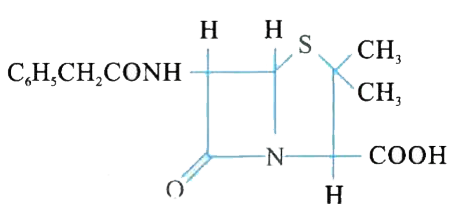 Apenicillin FBpenicillin GCpenicillin KDampicillin
Apenicillin FBpenicillin GCpenicillin KDampicillin







